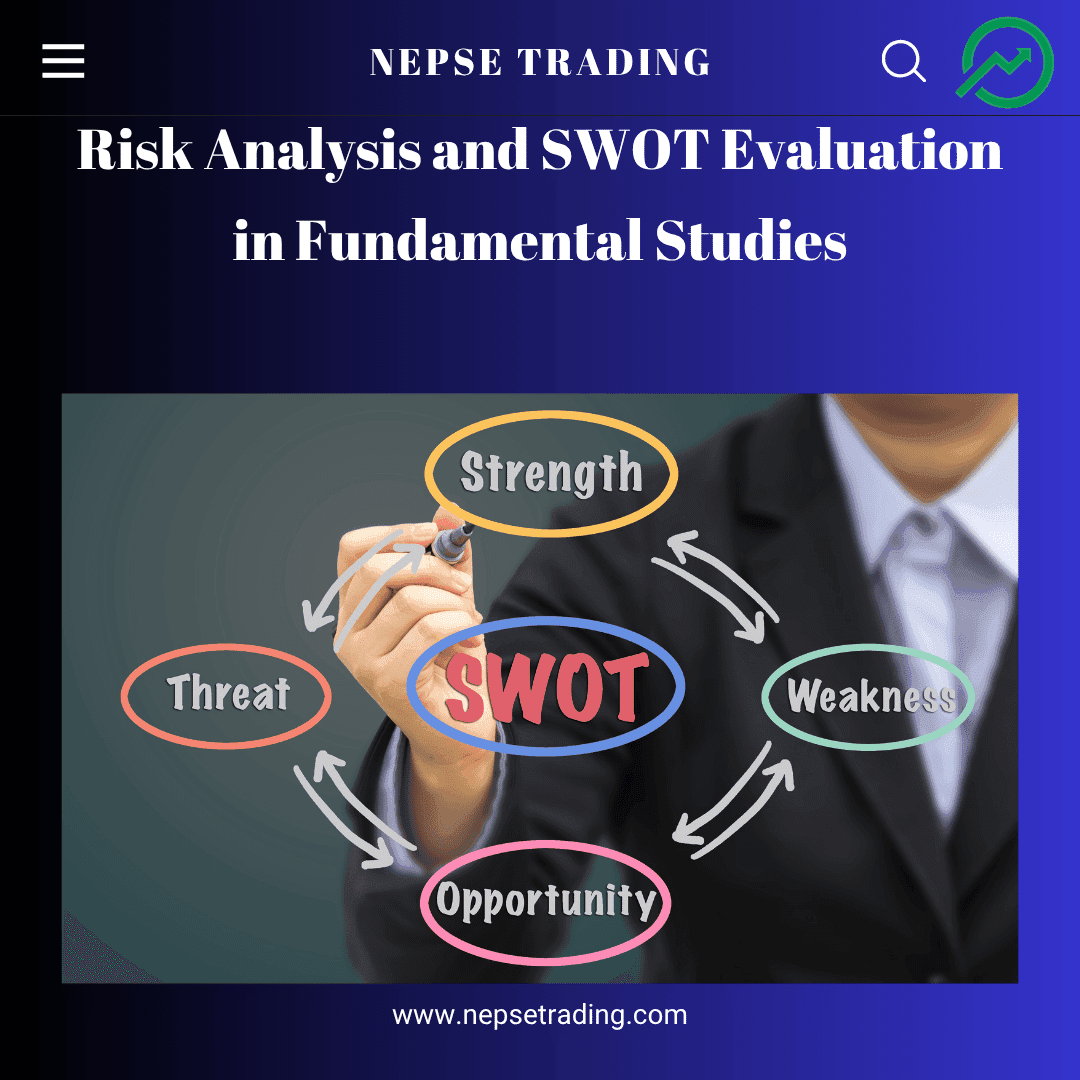By Sandeep Chaudhary
Risk Analysis and SWOT Evaluation in Fundamental Studies

In fundamental analysis, one of the most crucial steps before making any investment decision is conducting a Risk Analysis and SWOT Evaluation (Strengths, Weaknesses, Opportunities, Threats). These tools help investors understand the real picture behind a company’s performance — not just its profits and ratios, but also its internal efficiency, external environment, and long-term sustainability. For investors in the Nepal Stock Exchange (NEPSE), using risk and SWOT analysis ensures that investment choices are grounded, rational, and forward-looking.
Risk Analysis focuses on identifying and evaluating factors that may negatively affect a company’s operations or profitability. These include:
Financial Risk: High debt levels, liquidity shortages, or unstable earnings.
Operational Risk: Inefficient management, supply disruptions, or weak technology.
Market Risk: Economic slowdown, inflation, or interest rate volatility.
Regulatory Risk: Changes in government or NRB/SEBON policies.
Reputation Risk: Brand damage, fraud, or corporate mismanagement.
By assessing these, investors can understand whether a company can survive adverse situations and still deliver returns. A company with low leverage, diversified income sources, and strong internal controls usually scores well in risk management.
On the other hand, SWOT Analysis provides a balanced framework to evaluate a company’s internal strengths and weaknesses and external opportunities and threats.
Strengths: Brand reputation, management quality, innovation, or market dominance.
Weaknesses: Poor cash flow, outdated systems, or dependence on few products.
Opportunities: Expansion potential, export growth, or favorable government policies.
Threats: New entrants, regulatory changes, or global market uncertainty.
For instance, a hydropower company may have strong opportunities due to rising demand and export potential, but weaknesses like project delays or financing risks. Similarly, banks may face opportunities from digital transformation but threats from policy tightening or liquidity fluctuation.
A combined Risk + SWOT framework allows investors to see both the challenges and advantages in one place. It helps identify whether a company’s strengths can outweigh its risks and whether management is equipped to convert opportunities into profit.
According to Sandeep Kumar Chaudhary, Nepal’s renowned Technical and Fundamental Analyst and founder of the NepseTrading Training Institute, “A wise investor never looks at profit alone — he studies what can go wrong and how strong the company is to handle it. That’s where SWOT and risk analysis become your safety net.” With 15 years of banking experience and having trained 10,000+ Nepali investors, he emphasizes that integrating SWOT and risk assessment is key to long-term wealth preservation and professional-level investing.









